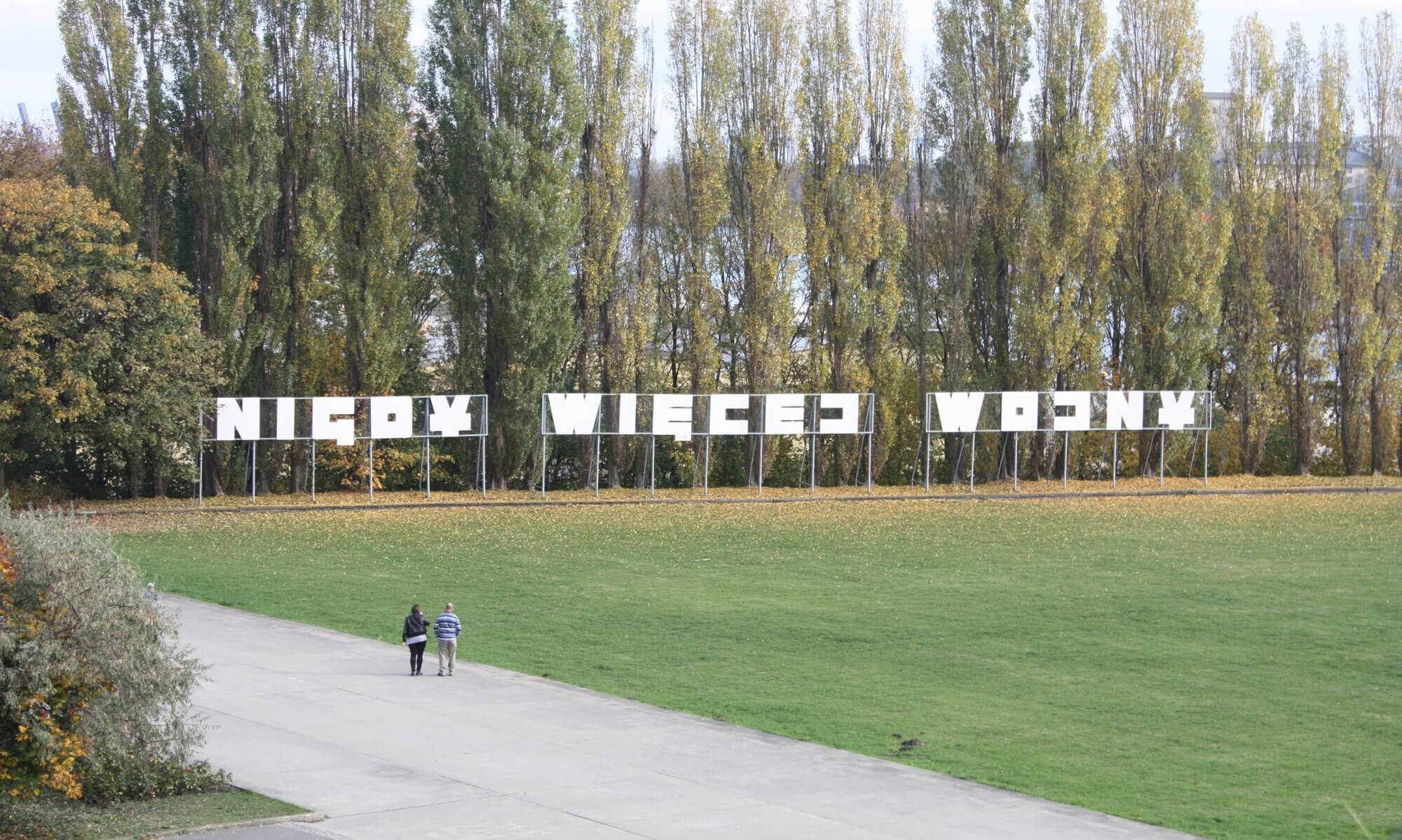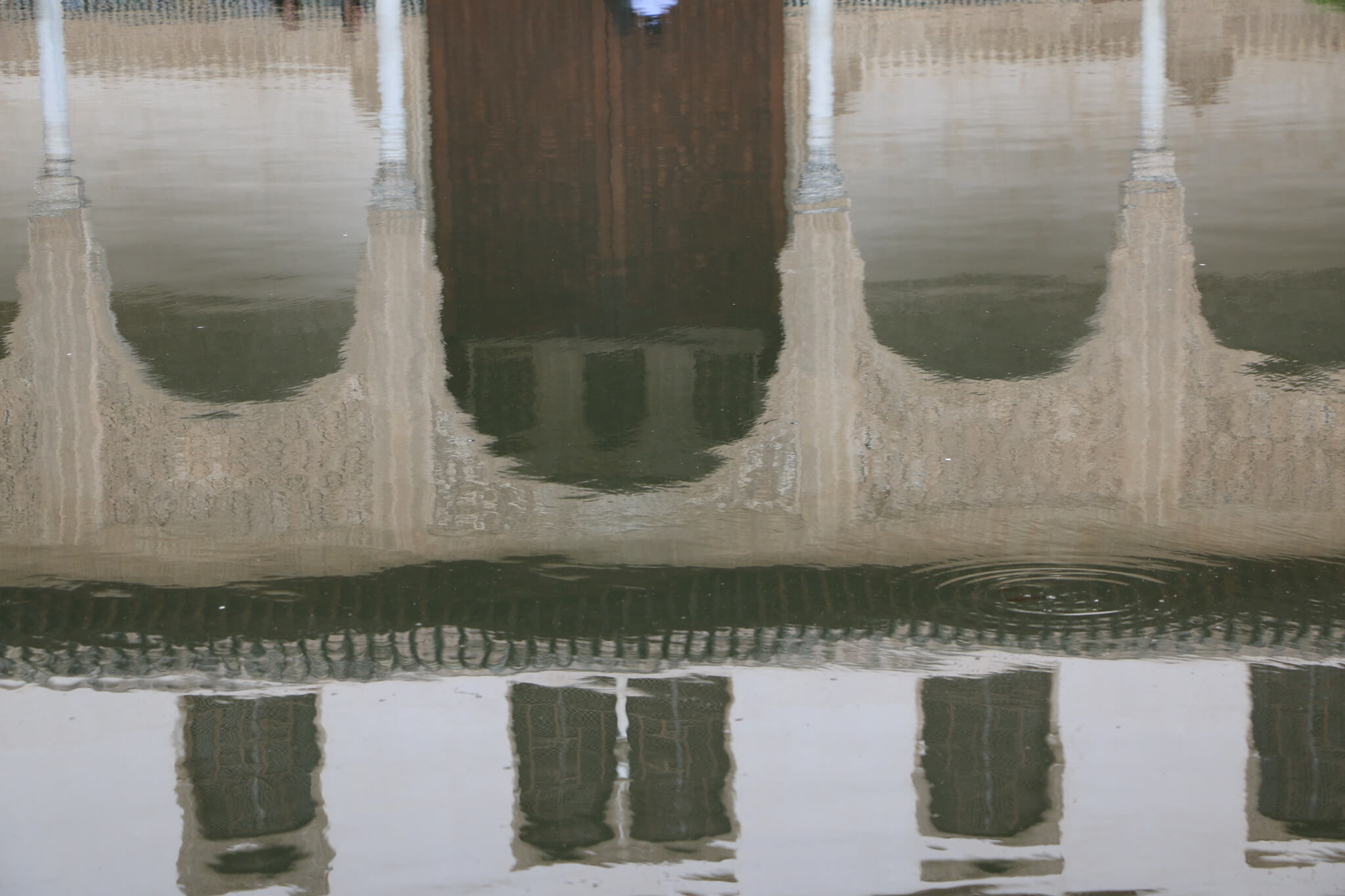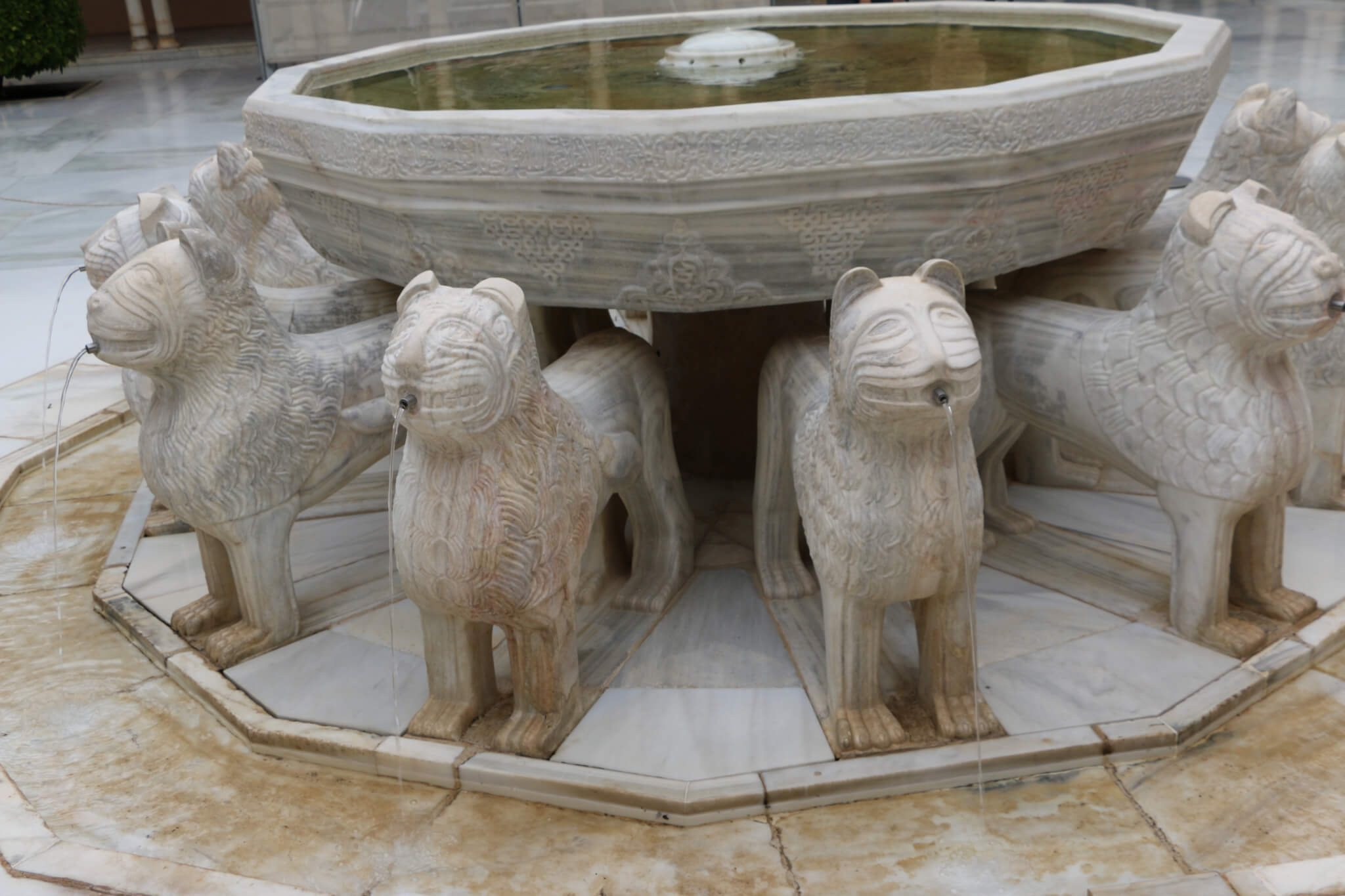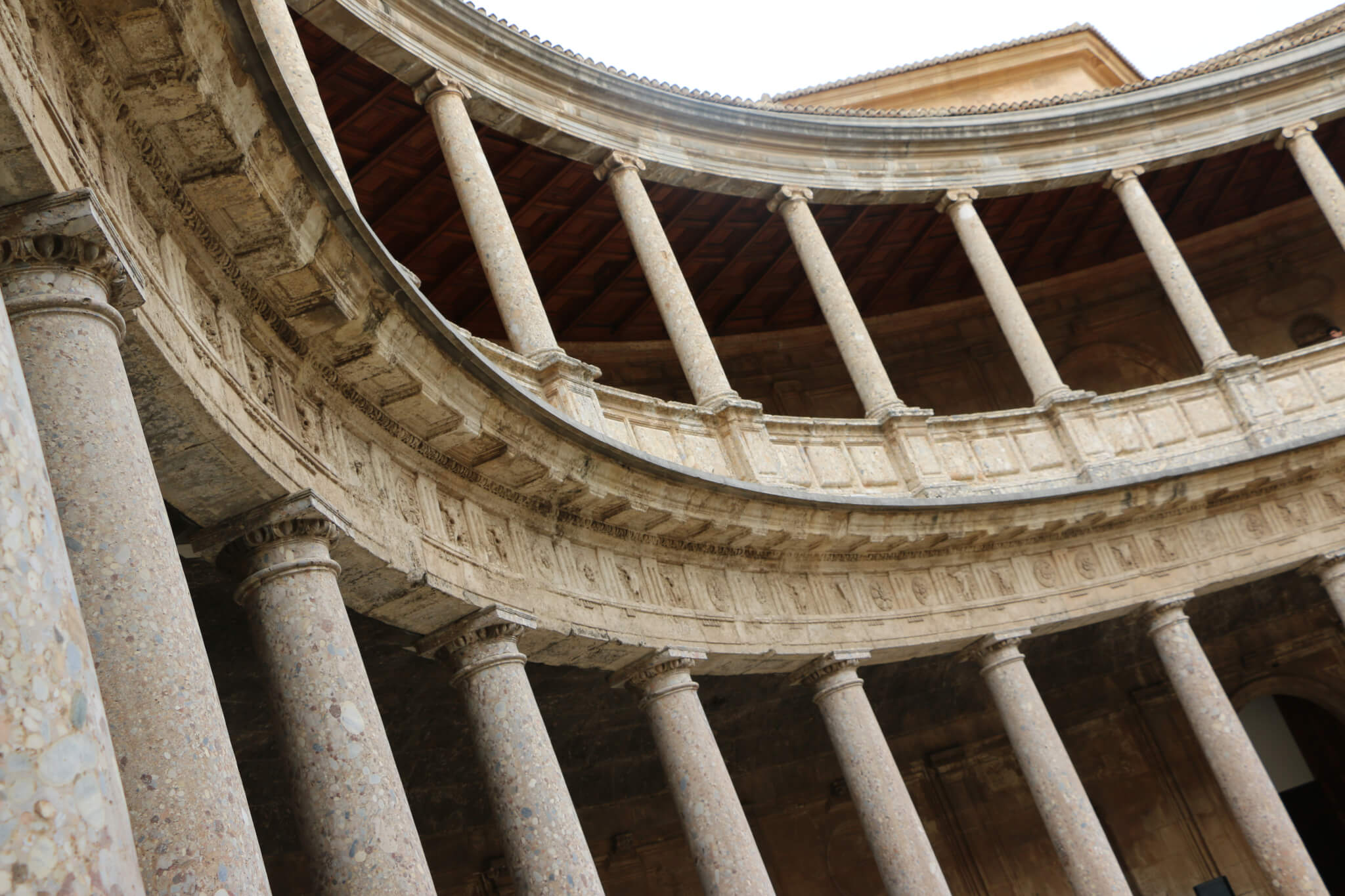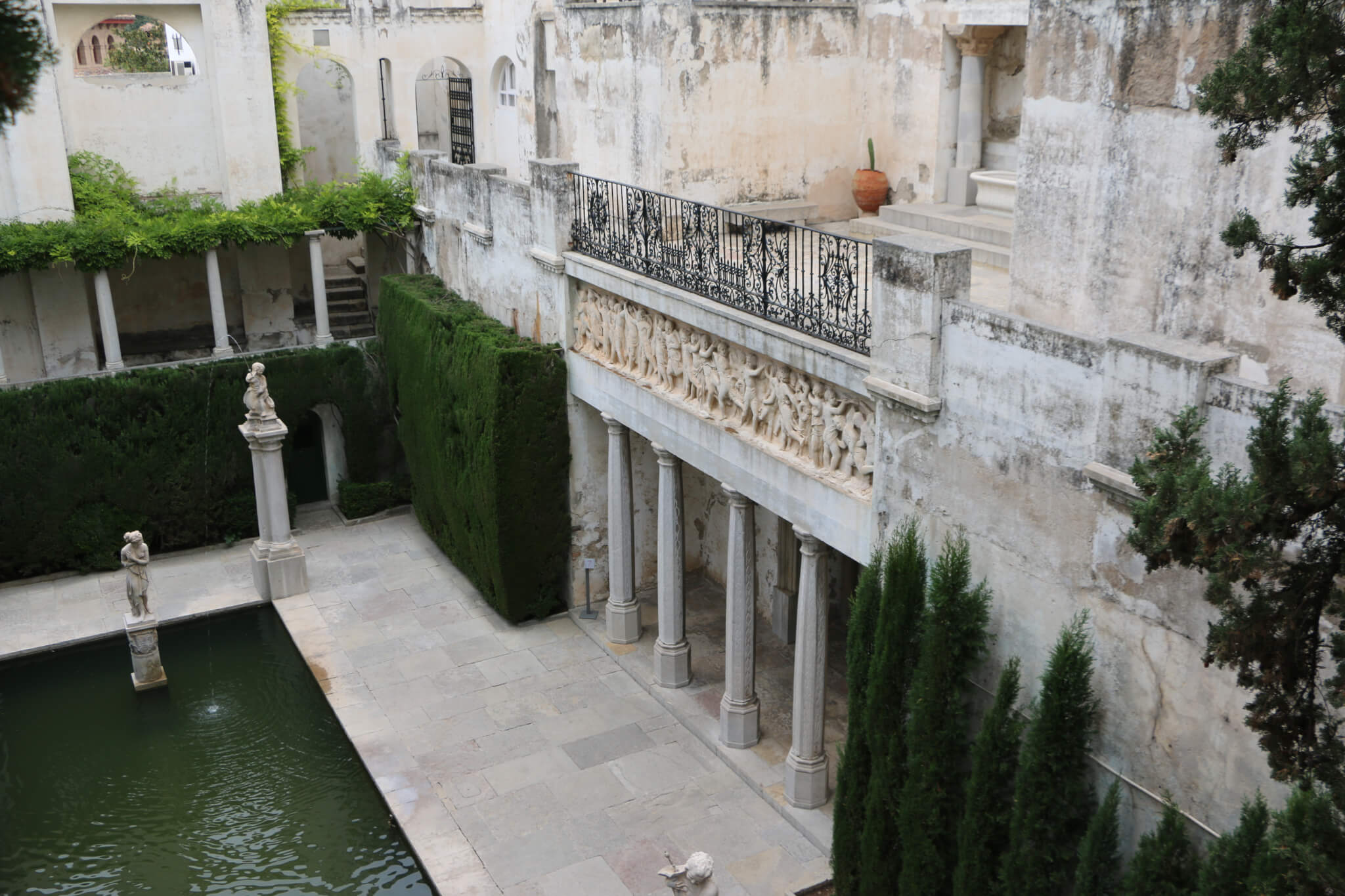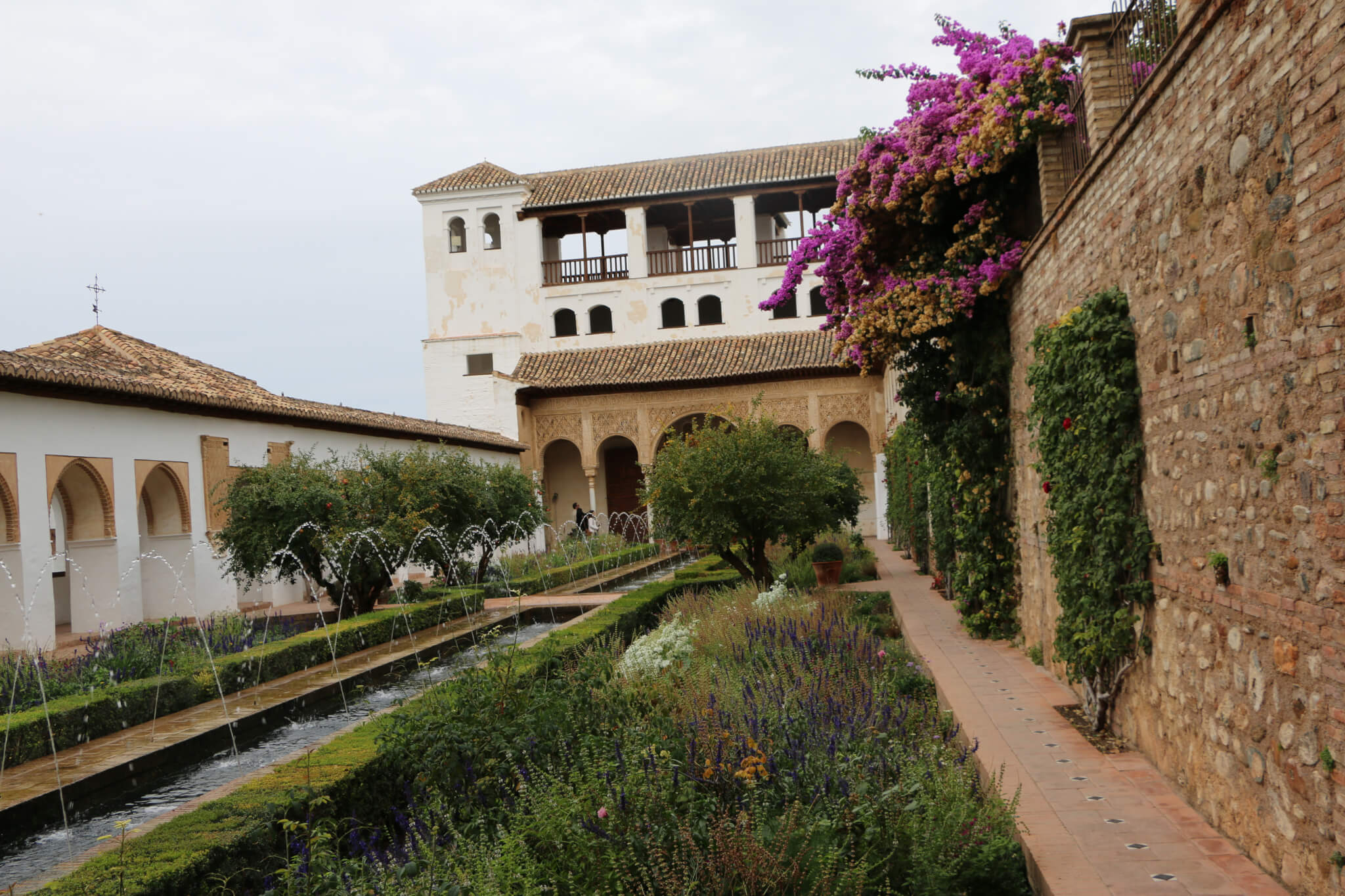One of the most visited places in Europe and a UNESCO World Heritage site. The Alhambra (“red castle”) above Granada, Spain is a wonderful example of Moorish art during the Islamic reign in Andalucía. It has been built between 1238 and 1492 by different emirs and caliphs. In some phases afterwards the art has been protected, the military structures have been partially destroyed and under Charles V. some buildings have been replaced and altered. But the most important parts are still visible. Continue reading “The Alhambra”
Patio de los Leones
The Nasrid palaces at the Alhambra in Granada, Spain were the place where the Nasrid rulers lived and reigned. The palaces divide into four sections: mexuar, comares, leones and lindaraja. All four share typical elements of Moorish art; water as a central element, very fine decorations, arcs and columns surrounding the courtyards. Continue reading “Patio de los Leones”
Palacio de Carlos V. & the museums
King Charles V. of Spain planned to make Granada the seat of government. Therefore he made minor and major changes to the Alhambra. Within some parts of the Nasrid palaces you can find his slogan “plus ultra” (“further beyond”) decorating the walls. He also tore some parts of the palaces down and errected the round shaped Palacio de Carlos V. – but his original plan was never finished because political goals changed.
Continue reading “Palacio de Carlos V. & the museums”
Because he could
Not far away from the Alhambra in Granada, Spain you can visit the Fundación Rodríguez-Acosta with a museum and a very special artificial garden. I must admit, when I entered the building I was pretty unsure if it was worth the detour. But in the end I was pretty happy that I did it. The fundación preserves the heritage of José María Rodríguez-Acosta, a Spanish painter from Granada – and in my opinion a crazy and cool guy. Continue reading “Because he could”
Summer breeze, night & day
At the north-eastern end of the Alhambra in Granada, Spain a path leads to the summer palace Generalife. As water is an important part of Moorish architecture this palace and its gardens are really worth a visit – at day and at night. It was a good place for the kings of Granada to recover he from governing because the Alhambra was so close that he could return easily to his daily business if necessary. Continue reading “Summer breeze, night & day”
Fortified walls
The Alcazaba is the fortress and military wing of the Alhambra in Granada, Spain. It has always been standing in the shadows of the more beautiful Nasrid palaces close-by and as it has been destroyed to some extent it isn’t that spectacular – but it offers wonderful views on the city of Granada. After passing the Puerta del Vino (where wine could be traded interest-free) you’ll first see the massive Torre del Homenaje and can then enter the Alcazaba through the Puerta de las Armas.
Continue reading “Fortified walls”
More than a harbour
Until some years ago no tourist would stop by in Málaga, Spain. Who ever arrives at Málagas Costa del Sol airport would directly continue to Córdoba, Granada or Sevilla. It was a typical city that once only generated wealth by having a harbour (and subsequently a lot of industry). But things have changed, the city center has been cleaned up and really a lot of museums invite you to stay. Continue reading “More than a harbour”
Narrow streets, a castle and the sea
Going from Málaga to Granada could by pretty easy on the motorways connecting the cities. But you would miss a lot, like the city of Salobreña located on a rock close to the Mediterranean sea. The castle was once a summer residence of the rules of Granada and was later on used as a prison. Getting up there is tough work as the streets of Salobreña are very, very narrow (which doesn’t keep the citizens from parking their cars there). Continue reading “Narrow streets, a castle and the sea”
Balcón de Europa
Nerja is a small city located approximately 50 kilometers east of Málaga, Spain. It offers a lot of beaches and the most favorite part is a land tongue reaching into the Mediterranean sea: the Balcón de Europa. It is said that from here you can see the African shore but this is maybe only a legend. Nonetheless Nerja is a good stop for lunch and enjoying the sun at the promenade.
Hotel Molina Lario
The hotel Molina Lario in Málaga, Spain doesn’t look very spectacular – even so it is a four star hotel. What makes it wonderful for a stay at the Costa del Sol is the location: you’ll find it directly between the harbour and the cathedral of Málaga. All mayor sights of the city are in walking distance. And there is a pool and a bar on the roof top as a surplus.
